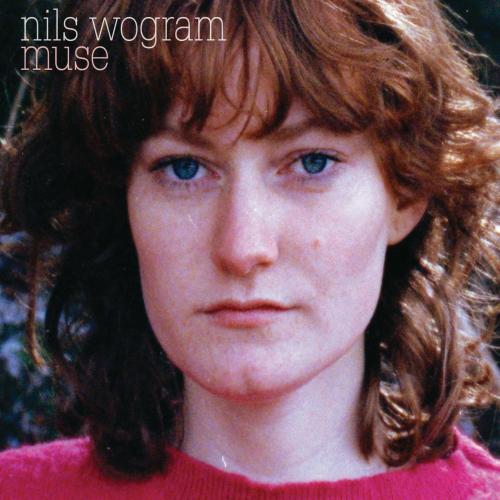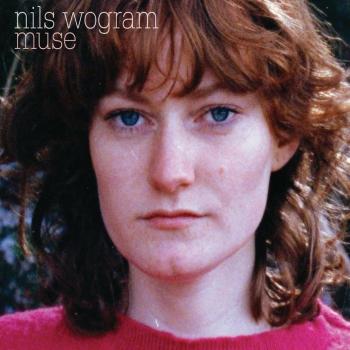
Muse Nils Wogram Muse
Album info
Album-Release:
2021
HRA-Release:
08.10.2021
Album including Album cover
- 1 All the Things That Could Go Wrong 07:42
- 2 Hope and Fear 09:38
- 3 Chillin' with J 04:20
- 4 Basis of Learning 06:23
- 5 Miniatures 09:04
- 6 Hard to Like Him 03:51
- 7 Albis Abelis 06:58
- 8 Michel's Secret 08:36
- 9 Hell of the Intellect 05:48
Info for Muse
All or nothing! No half measures! Where routine weariness becomes noticeable in the careers of many other artists, one senses that every new project trombonist Nils Wogram takes on is his very first one. This is particularly noticeable on his new CD, Muse, recorded with harpist Kathrin Pechlof, violist and overtone singer Gareth Lubbe and Wogram’s long-term companion Hayden Chisholm on saxophone. But why start from scratch once again with a completely new band when Wogram has achieved everything a jazz musician can ever achieve with working bands such as Root 70, Nostalgia or the Vertigo Trombone Quartet as well as alongside Aki Takase, Simon Nabatov, Bojan Z, Michel Portal and many others? The answer is as simple as it is complex: because Nils Wogram simply can’t help but give in to his instinctive artistic curiosity and look at what is waiting for him over the horizon, regardless of everything he has achieved,
And so everything on Muse is actually completely different than what one is used to from Nils Wogram and his musical environment. The only constant remains Hayden Chisholm, a musician who has unreservedly shared the trombonist’s obsessions for decades and who always gives him a bit of support, not only musically but also, above all, as a human being – despite Wogram’s willingness to take risks. Wogram has also played together with Kathrin Pechlof from Berlin and Gareth Lubbe from South Africa in various groupings, but a line-up like the one on Muse has never existed before and is probably unparalleled in music history in general. All the greater is the incentive for the visionary trombonist, who never searches just for the sake of searching, but whose goal mark without any compromise is “finding,” to make the impossible possible and the unheard audible.
Nils Wogram’s music has always been characterized by a great sensuality. While he has celebrated the sensuality of the moment in almost all his projects so far, the sensuality of the lasting comes to the fore on Muse. Lingering in this form plays a major role in the chamber-musical feel of this constellation. The warm sounds sometimes recall the portraits of an Amadeo Modigliani, images that have frozen into still lifes. To stay in the picture, the album’s compositions can be visualized not so much as a leaf moving jauntily in a spontaneous gust of wind, but rather as a vase that graces a room in its once-created form and plays with light.
“There are improvised passages on Muse as well,” Wogram notes, “but they are much less influenced by jazz, a characteristic that, of course, is very much up to the protagonists. When I was composing, I already knew with whom I would make the music and where their strengths lay. I brought that into harmony with my musical ideas. Only the future will show the extent to which these musical forms are permanently fixed or will develop further. I don’t know at the moment.”
How could you? With this CD, the Muse project is only just beginning. This laid-back openness to all the possibilities – ones that can arise from what has just begun – is also easily transferred to the listener. The music may be complex, but its immanent beauty and friendliness, for all its formal rigor, is also enormously relaxing for the listener. Muse is a quiet album. Every note counts. Sound is the crucial component. “A priority for me was to allow this quiet, sensual music to happen without questioning, from the outset, whether it would work in the form of a CD or live performance,” Wogram says. “I just like that aesthetic. But it can only work if I implement it consistently. Consistency for me is directly related to clarity. Music with a strong mood always releases strong emotions.”
In Muse, the constellations and transformations in the compositions are as diverse as the incidence of light at different times of day. The individual sounds interpenetrate each other with such transparency that it is not always possible to say exactly if this is a harp or viola, or where the multiphonics on the trombone begin and where Lubbe’s overtone singing ends? Chisholm’s saxophone runs through these sonic light shows like a spirit that continually mediates between physicality and foreboding. The harp – a very quiet instrument on whose level all other sound sources must or may engage – provides the timbre. For the first time in the long history of his music, Wogram has recorded an album in a sitting position in order to engage with the demands of the harp from all sides. Kathrin Pechlof, on the other hand, absorbs the input of trombone, saxophone, viola and voice in her thousand and one strings. This almost fairytale-like harmony is the basis, not the result of playing together. In this way, even from the outside, it is quite easy to listen to the four participants listening to each other.
In ancient mythology, the muse is a figure who unites the divine principle of creation and passes it on to mankind. The fables of great artistic personalities and their muses fill entire compendia. Nils Wogram, Kathrin Pechlof, Hayden Chisholm and Gareth Lubbe, however, do not need a personified source of inspiration to enter together into the service of the musical muse. Their tone poems without lyrics are full of poetry and show one thing above all: The first step is always the easiest!
Nils Wogram, trombone
Kathrin Pechlof, harp
Gareth Lubbe, violin, viola, overtone singing
Hayden Chisholm, alto saxophone, overtone singing
No biography found.
This album contains no booklet.










